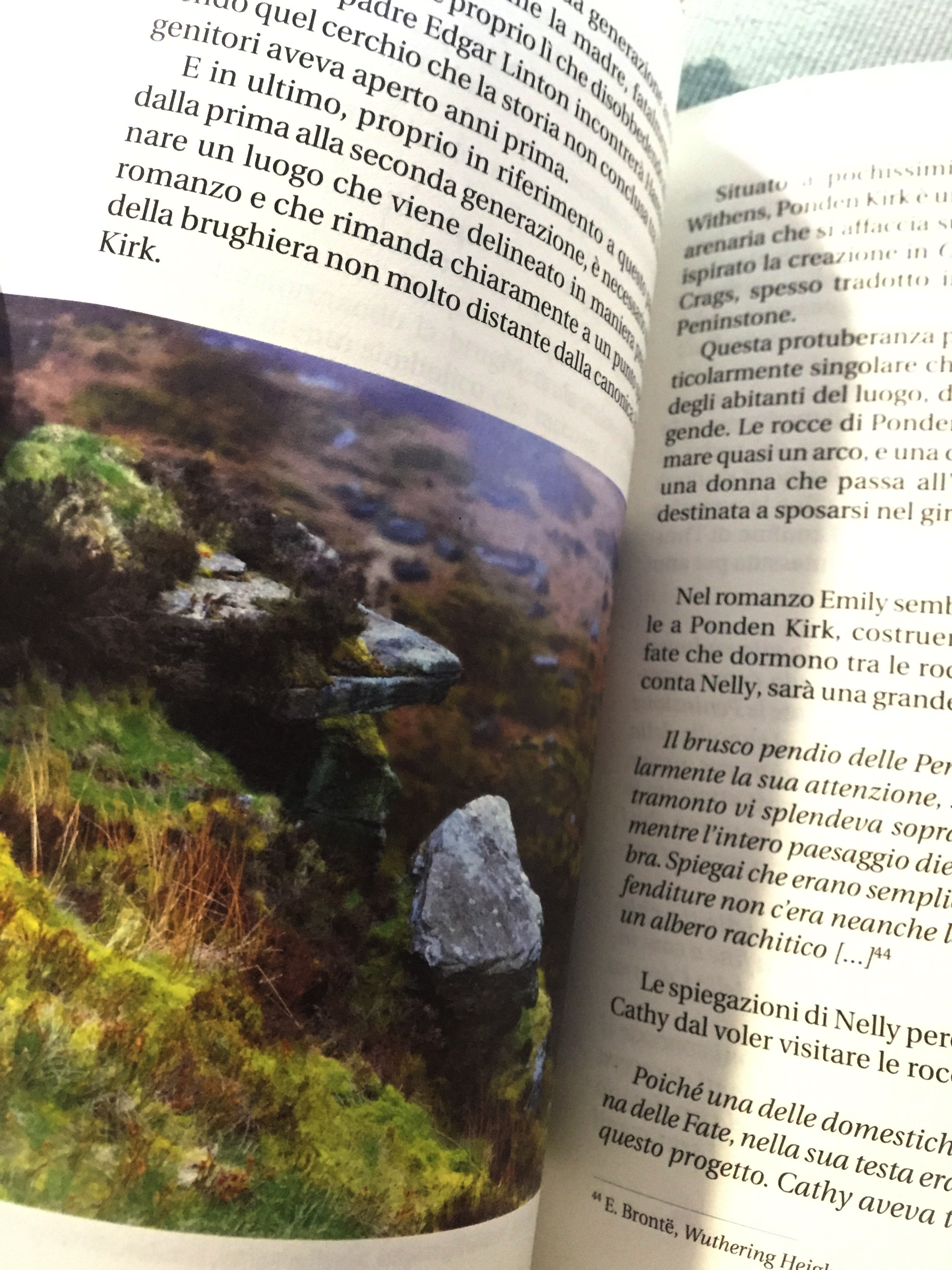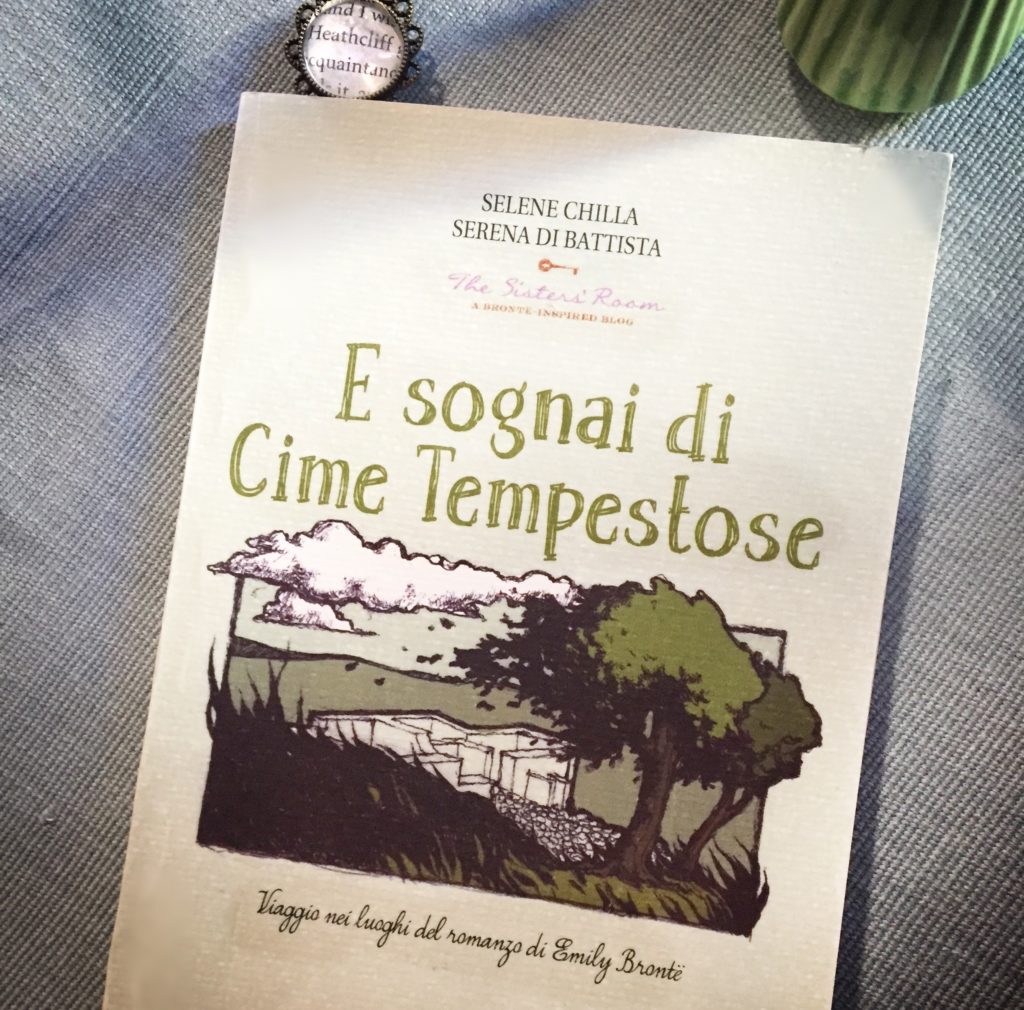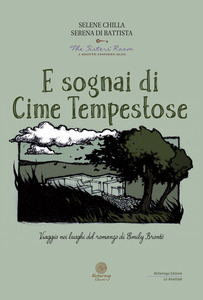Have you already heard about our book? It’s been recently published by Alcheringa Editore, and it’s about the places in England that Emily Brontë describes – between fiction and reality– in her only novel, Wuthering Heights. This book will lead you to those places that, according to tradition, inspired the creation of Wuthering Heights and Trushcross Grange. You’ll find out if the little window where Catherine’s ghost appeared really exists, and we’ll walk you to the famous Fairy Cave that young Cathy loved so much! It’s a book for real Brontë lovers!
Here are some curiosities and an excerpt from our E Sognai di Cime Tempestose:
- It was written by Selene and Serena, the Italian bloggers who created The Sisters’Room- a Brontë -inspired Blog, first Italian-English blog about the Brontë Sisters
- In the book you’ll find some of the information we gathered on our trips to Brontë Country, talking to Brontë experts and listening to local traditions
- You’ll also find some pictures that are courtesy of Julie Akhurst, current owner at Ponden Hall, which depict the amazing interiors of one of the houses that inspired Wuthering Heights
- At the end of the book there is a section that collects some travel articles from the blog, where we share our personal experience in the places of Emily’s novel
- An interesting essay by professor Maddalena de Leo, Italian representative of the Brontë Society, makes our book even more worth reading
- The cover image is by the Italian illustrator Lucien Clear, and it was inspired by one of our pictures of Top Withens
And now that you know a little more about our book, here’s an excerpt. We hope you’ll enjoy it!
E sognai di Cime Tempestose, Excerpt
“The windy and isolated landscape of Wuthering Heights plays a fundamental role in the story- it can almost be considered as one of the protagonists of the novel, like a silent narrator that bears some symbolical elements only visible to those who can pay attention. The great importance given by Emily to geography in Wuthering Heights is made clear in the title, which leads us to a place located on an upland where the weather is windy and cold. She uses the word “wuthering”, which is an expression tipycally used in the north of England, and it helps us to locate those “wuthering heights” even more specifically in the area where Emily Brontë herself was born and she spent her life. […]
The most important characteristic in the geography as outlined by Emily in Wuthering Heights, is that despite everything seems to suggest that the setting of the story is the north of England, the links between the landscape described by the author and the real geographical features of Yorkshire seem to fade at some stage in the novel. Emily Emily Brontë’s love for the surroundings of the Parsonage, and the many studies about possible connections with places like Ponden Hall and Top Withens, make us think that the area around Thrushcross Grange and Wuthering Heights may have been described taking Haworth and its surroundings as a model. However, experts have often found it difficult to match the entire landscape of the novel with the area where Emily Brontës lived, identifying incongruencies with any existing district in the north of England.
Wuthering Height’s geography is in fact very complex, and it depicts a microcosm where Emily’s imagination and reality mingle to give life to a world that, rather than being real, is a complex creative synthesis of the places where Emily lived.”
This excerpt of E Sognai di Cime Tempestose is the starting point of our research, and from here we will take you in the footsteps of Emily and we’ll try to answer a big question: is it really possible to see the places that inspired Wuthering Heights?
The book is only available in Italian for now but… never say never!
Selene
Did you know that we’ve presented our book on the national radio channel Rai Radio2? If you want to know more click here: Rai Radio 2, Wuthering Heights and our dream .






